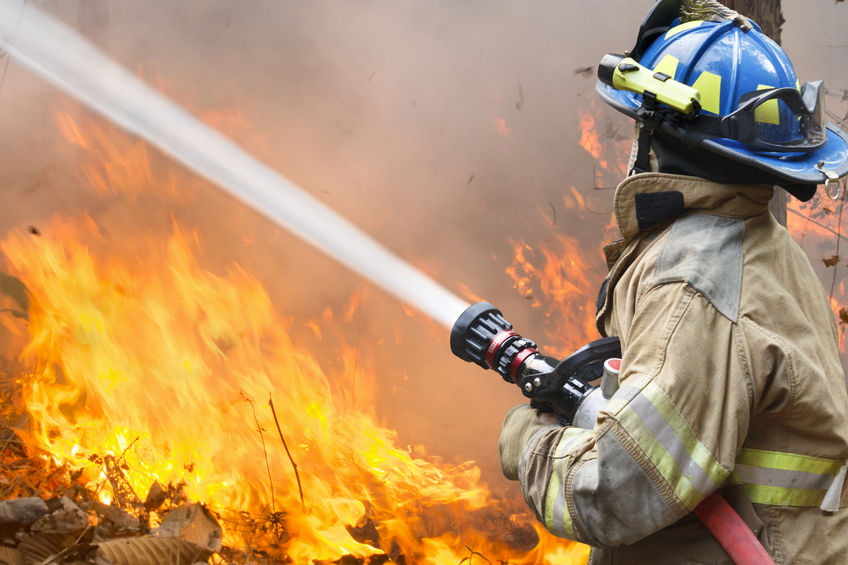A good part of my home province, British Columbia, is on fire. I’m grateful, in more ways than one, to those who are fighting those fires.
Due to the hot and dry conditions, there are hundreds of forest fires currently active, many of them out-of-control, across British Columbia. 14,000 people have, so far, been forced to leave their homes for safer environs.
I’ve never fought a forest fire. I’m very thankful for all the folks who know how to do that, and go out and do it.
I have fought workplace conflict fires, though. Respecting my fire fighting brothers and sisters, I’m pretty sure I have something to learn from them and that I can apply to the conflicted workplaces I encounter.
Forest fire control experts know all about how fires start, tactics for controlling them, and ways to prevent them.
The fire starts and it grows
Heat source, fuel, and oxygen. Those are the fundamental needs for a fire.
A forest fire has to be started by a heat source; a natural one such as lightning or a human-generated; a cigarette, a campfire spark…
A fire escalates with fuel and oxygen. The fuel for a forest fire is stuff that burns quickly and easily; e.g., dry grass, shrubs, pine needles… the less energy to burn, the better, as far as the fire is concerned.
Oxygen sustains the fire. Winds bring in fresh oxygen. Winds also spread the fire to other fuel sources.
Understanding the science behind forest fires, and studying the weather conditions, are vital to effective forest fire suppression.
Takeaways for managing workplace conflict:
Learn the fundamentals of managing conflict: how conflict is triggered, how conflict escalates, and how to de-escalate conflict. Understanding conflict dynamics is, should be, a fundamental human skill. Soft skills are permanent skills. Understand conflict from a systems lens; frame it in context, of the team, of the organization.
Tactics for controlling a forest fire
Three common tactics for fighting a forest fire are: create a firebreak (aka fireline), suppress the fire with water, and take advantage of natural barriers.
A firebreak can be a man-made space around the perimeter of the fire, or a controlled burn of dry plants, where the fire’s fuel is removed.
Throwing water (or fire retardant foam) on a fire makes the fire’s fuel too wet to burn and also suppresses oxygen, to the flames. Water is nature’s way.
Natural barriers such as rivers, lakes, and roads, can provide a natural ending spot for the fire. Note: All fire suppression activities are based from an ‘anchor point’, a safe place from where fire fighters can venture forth, to fight the fire.
Takeaways for managing workplace conflict:
Contain the conflict. Isolate and/or limit the damage from toxic elements; e.g., workplace bully, the fuel source. Help individuals become more self-aware of their conflict triggers and behaviours. Self-awareness is akin to throwing water on a fire. Provide a safe space for authentic conversations. Its conversations that change people, and enable them to get a handle on their interpersonal fires.
Preventing forest fires
Fire control managers know the warning signs. When surface conditions are extreme, they tell you, “don’t light grass fires or burn debris”. They promote and enforce campfire safety. They perform regular maintenance on equipment needed to fight fires. All in all, they take proactive, due diligence, measures, to prevent forest fires, and to be ready, when fires do occur.
Takeaways for managing workplace conflict:
Observe the conflict warning signs. Most conflicts start small, from a gut reaction, a feeling that something is a bit off. From there they grow, into naming and blaming, and worse. Get to know the warning signs; yours and others. Know your hot buttons. Keep them in check so the conflict, fire, doesn’t spread. Develop the necessary skills. Have the conflict management systems in place. Walk through potential scenarios. Be prepared. When conflict manifests, respond constructively.
The fire-conflict metaphor and conundrum
The British Columbia fires are all the news, this week. Yesterday, I heard a forest ecologist explain more of the genesis of those fires. We had a very wet spring. The grasses grew nicely. Our wet spring has been followed by an extended dry period. The grasses have, essentially, turned to kindling, fire fuel. And, its early in the fire season, to boot. Going forward, what can we control? What’s out of our control?
The feeling of all is good is now one of all is not good; a metaphor for interpersonal conflict. When times are good, we benefit. Yet, conditions change. When they do, we may find it hard to adapt. We may even carry on, avoiding the conflict growing, as a result of those external condition changes, within and between us.
When the spark comes, when the conflict fire starts, how will you respond?


Speak Your Mind